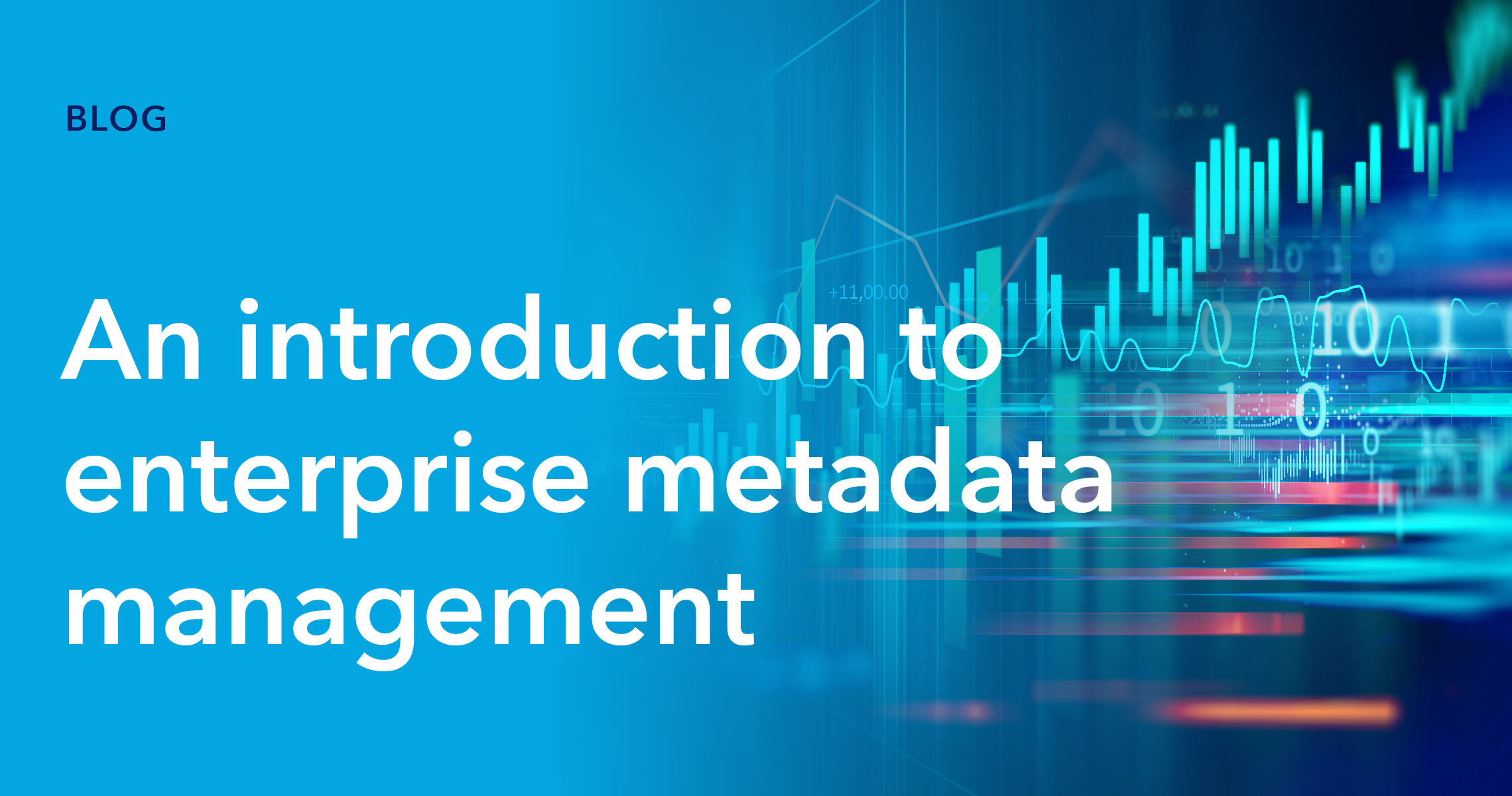Enterprise metadata management is the business function or discipline that manages metadata to make it a fully effective data tool for an organization. Effective metadata management can significantly improve other aspects of data operations.
Metadata, or identifying information about stored data or “data about data,” can vary hugely in quality and consistency. Sometimes, it isn’t present at all. However, in a highly functional DataOps environment, metadata makes identifying and locating specific data and subsequent querying or packaging for downstream use much quicker and more efficient.
Enterprise metadata management is how organizations ensure that the structures, documentation, and business requirements are aligned through the data’s collection, storage, and usage. At its core, metadata management ensures a unified approach to metadata so that it can fully deliver on its value.
Why use enterprise metadata management?
As data collection and DataOps teams grow in size and importance, the need for faster, smoother metadata functions becomes more critical. There are a number of reasons why effective enterprise metadata management is needed in an organization, including:
- Provides higher quality data: Organizations can make better decisions the better their data is. Effective enterprise metadata management can enhance data quality by allowing data functions to locate exactly the data they need, wherever it is.
- Ensures regulatory compliance: With increased data security regulations and organizational risk, metadata management allows traceability and data auditing throughout the data lifecycle.
- Overcomes data complexity: As data volume grows, so does its complexity, which doesn’t help end-users. With enterprise metadata management, data functions can create bespoke datasets for downstream users that cut through the mountains of data to deliver actionable insight.
- Improves data velocity: As with many things, time is money when it comes to data. By reducing the time required to locate data and move it from inaccessible data swamps to a data lakehouse solution, DataOps teams can significantly reduce processing times and improve data velocity.
- Smoother data integration: Embracing digital transformation and opening silos to data sharing can translate to major data integration projects. Enterprise metadata management can make this a simpler and more efficient process by ensuring uniformity of metadata usage and providing storage documentation across all new channels.
Features of enterprise metadata management
There are a number of features of a highly functional enterprise metadata management function that ensure it is working as effectively as possible, or at least working towards that goal. These include data catalogs, uniformity, governance, and data provenance, which we’ll explore more in-depth below.
Data catalogs
Data catalogs are databases of metadata about all of an organization’s data assets and are one of the most critical elements of metadata management. This is where data scientists go to find data, whether they’re looking for something in particular or want to identify all data with specific characteristics.
Uniformity
A key role of enterprise metadata management is to ensure a common glossary throughout data collection and recording. This documentation means that there are semantic guides for how elements, such as names, dates, and sources are entered as metadata. This way, everyone else in the organization, current and future, will know exactly how to find what they need.
Governance
The rules surrounding what data can be collected, who gets to use it, and how it is used are critical for ensuring regulatory compliance. It is the role of data governance functions to keep an organization in line with legal and organizational expectations in terms of data usage. In turn, data governance helps enterprise metadata management maintain consistent compliance through the data lifecycle.
Data provenance
The lineage of data assets answers many questions about where, when, and from whom data was originally sourced. While this in itself is extremely useful for tracking and locating data, it can also describe who has used or edited data assets in the past. As a result, this becomes an essential tool in data auditing and identifying breaches, which is also part of compliance responsibilities.
How to deploy enterprise metadata management
With the ever-increasing size and complexity of data operations, the need and benefits of effective enterprise metadata management are clear. However, making this a reality is difficult for many organizations. Specially created metadata management architecture can face considerable issues in terms of scalability and the resources needed for both initial implementation and ongoing maintenance.
A much easier-to-deploy and cost effective solution is data virtualization. A secure data virtualization platform can be dropped in to create an interoperable layer between data storage and collection functions and subsequent processing. This virtualization allows administrators to uniformly deploy enterprise metadata governance rules across all current and incoming data assets. The resulting data catalogs then afford easy access for data scientists looking to locate data, which can be accessed, wherever it is, and brought together for querying all through virtual means.
Deploying a data virtualization solution for enterprise metadata management eliminates the need for costly and time-consuming data migrations. In addition, it ensures that data velocity is not affected as data collection or storage scales. The ease of use of a drop-in virtualization solution also greatly assists regulatory compliance through the clearer labeling of data, easier implementation of governance rules, and enhanced data auditing capacity.
To find out more about how Intertrust Platform is enabling better and more cost-effective enterprise metadata management, you can read more here or talk to our team.
About Abhishek Prabhakar
Abhishek Prabhakar is a Senior Manager ( Marketing Strategy and Product Planning ) at Intertrust Technologies Corporation, and is primarily involved in the global product marketing and planning function for The Intertrust Platform. He has extensive experience in the field of new age enterprise transformation technologies and is actively involved in market research and strategic partnerships in the field.
